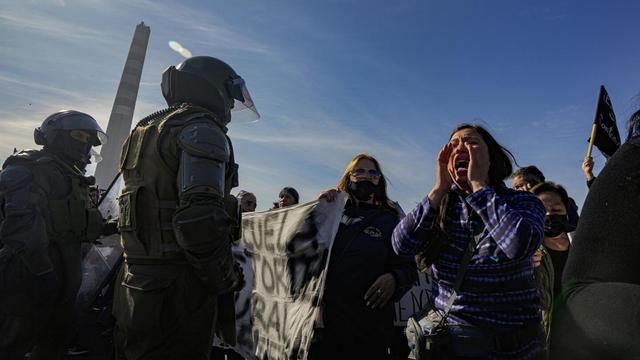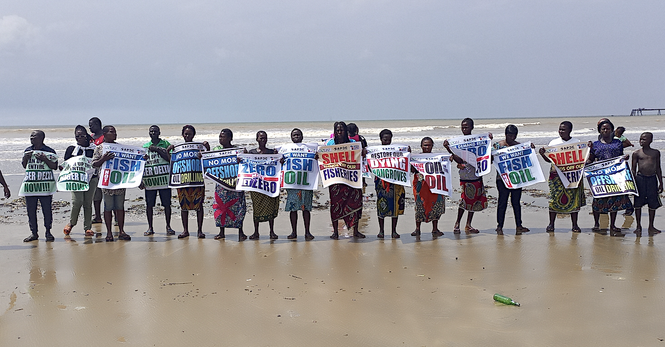How communities in #SacrificeZones suffer environmental injustices in #Mexico, #Chile, #Nigeria and #Indonesia (analysis)
Daniela Sepulveda and Angélica Arellano, 9 Apr 2025
"Across continents, 'sacrifice zones' resemble wounds carved deep into the fabric of our planet. These are regions where ecosystems and livelihoods have been ravaged by fossil fuel and other industries that promise progress but leave devastation in their wake. These are places where big business and transnational corporations are contaminating the rivers, darkening the skies, and making the soil barren; where the toll of development is paid in human suffering and ecological destruction.
"What unites these 'sacrifice zones' is the shared story of areas where prosperity for the few is built on the suffering of many, and where communities fight to mend the fractures inflicted upon their land, health and dignity.
"Here are four case studies highlighting the experiences of communities and civil society organizations collaborating with us in the Coalition for Human Rights in Development’s Community Resource Exchange.
#Tula, #Mexico
"In the #TulaTepejiApaxco region, where the #Toltec plains once supported rich #biodiversity and #CulturalHeritage, the water and air are now saturated with pollution. This devastated landscape was declared both in 1975 and again in 2005 by the U.N. as one of the most polluted places on Earth, marking it as an #EnvironmentalDisaster zone. Since the early 20th century, the arrival of #CementPlants, #refineries, #ChemicalFactories, a #coal-fired power plant and #LimeKilns has transformed the region. Backed by all levels of government, these industries have destroyed the area’s ecological balance and ruined the health of its people, poisoning the water, air and soil with #ToxicWaste.
"Prominent among these polluters are cement giants like #Holcim, #CEMEX, #CementosFortaleza and #Clarimex, whose operations release harmful gases that exacerbate the region’s environmental and public health crises. One of the epicenters of this environmental catastrophe is the #TulaRiver, which receives 150,000 liters (nearly 40,000 gallons) of untreated wastewater every second from Mexico City and the Valley of Mexico. These 'black waters' are teeming with industrial and hospital waste plus sewage, overwhelming the river and its tributaries.
"The #EndhóDam, originally built to support local #agriculture, has become a toxic dumping ground, poisoning thousands of people who rely on wells for drinking water. Despite decades of warnings, local and national governments have allowed this contamination to persist. The poisoned waters have killed fish, flooded the land with toxic sludge, and led to a surge in cancer, leukemia, respiratory and gastrointestinal diseases among the 15,000 inhabitants living along its banks. In 2021, a devastating flood related to the overflowing Tula River left 17 dead and displaced thousands, a stark reminder of the ongoing risks of government inaction.
"The region now faces a massive public health crisis, and the recent declaration by the Ministry of Environment and Natural Resources to designate the area as an ecological restoration zone is a necessary but overdue step. This declaration covers municipalities such as #Atitalaquia,TepejiDelRío, #Tepetitlán and Tlahuelilpan, where 498 businesses have been identified as generators of hazardous waste, including 14 that produce hydrocarbons. The study, based on a water, air and soil analysis, could mark the beginning of recovery if it is implemented with urgency and seriousness.
"Over the years, organizations like #RedDeConcienciaAmbiental '#QueremosVivir' have resisted, bringing visibility to the devastation and fighting to halt deforestation and continued pollution. In the words of one of the leaders of Queremos Vivir ('We want to live'), 'There needs to be a legal solution, because it’s that urgent. We believe there is still a way to reverse it, and we have time to show the newly elected president #ClaudiaSheinbaum the dire situation we’re in.'
"Their demands include a reduction in the water flow of the Tula River through holistic water management solutions, and government accountability for decades of environmental neglect, calling for reparations for both industrial pollution and the catastrophic 2021 floods.
"While they welcome Sheinbaum’s promises to clean the river and launch a circular economy project, they emphasize that meaningful environmental justice must not be delayed any longer. After stating the communities’ demands through tears, the Queremos Vivir leader said, 'Are we really just going to be destined to be a sacrifice zone? The damage is so severe, the degradation we are in, that if we don’t protect it, don’t defend it, then what are we going to do?' "
Read more:
https://news.mongabay.com/2025/04/how-communities-in-sacrifice-zones-suffer-environmental-injustices-in-mexico-chile-nigeria-and-indonesia-analysis/
#SEZs #Antofagasta #Nigeria #Indonesia #HumanRights #HumanRightsFreeZone #CorporateColonialism
#Exploitation #RaceToTheBottom
#HumanRightsViolations
#Pollution #EnvironmentalDegradation
#EconomicSacrificZones
#ForcedRelocation #ForcedDisplacement #TraditionalLifestyles #AirIsLife #WaterIsLife #EnvironmentalRacism #Exploitation




